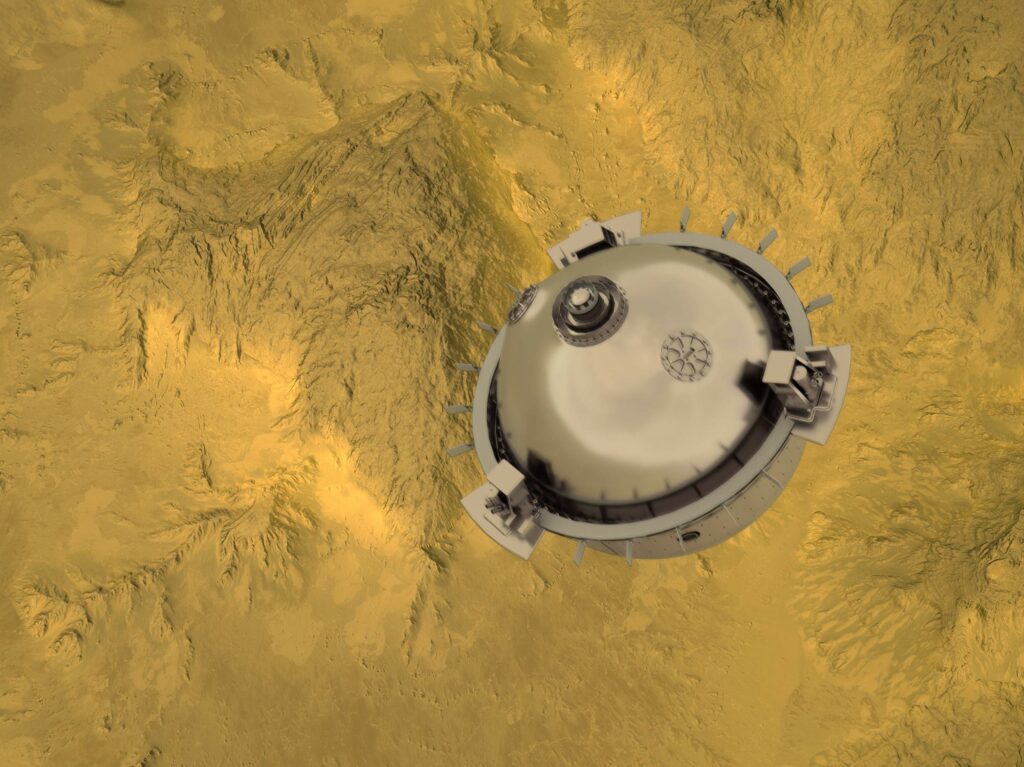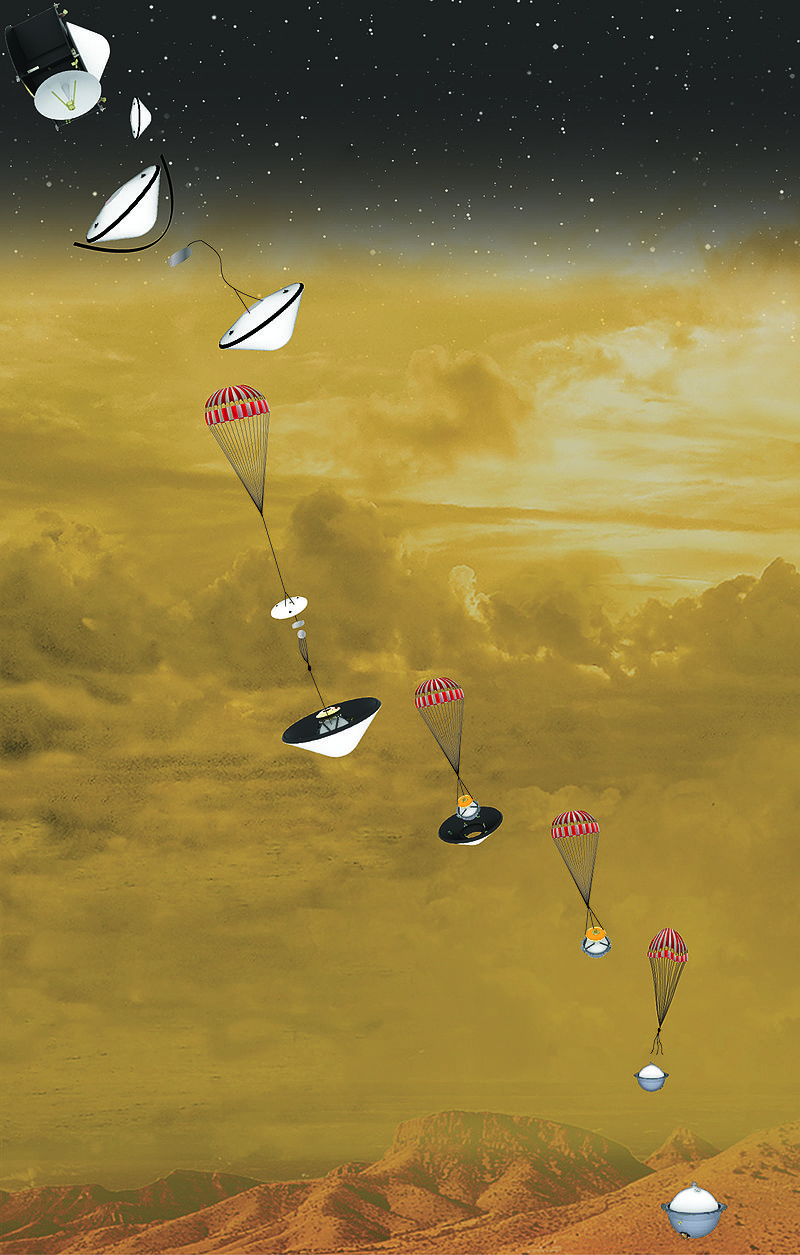In an article recently published in the journal The Planetary Science Journal, NASA experts shared details of the DAVINCI mission (Deep Atmosphere Venus Investigation of Noble gases, Chemistry, and Imaging). It will be launched in 2029 with the purpose of studying Venus.
Tasks and technical structure of the DAVINCI mission
The DAVINCI mission was one of the winners of the recent selection for the Discovery program. Its development is supervised by the Goddard Space Flight Center. The main objectives of the mission are to conduct a chemical analysis of the atmosphere of Venus and obtain images of its surface.

DAVINCI will consist of two components: the CRIS orbiter (Сarrier, relay and imaging spacecraft) and an atmospheric probe. CRIS will receive a set of two cameras designed to capture the cloud cover of Venus and map its high-altitude regions.
The DAVINCI probe is a 200-kilogram titanium sphere. A high-performance chemical laboratory will be located inside it, capable of conducting a detailed analysis of the Venusian atmosphere to search for traces of rare gases and isotopes in it. The probe will also receive instruments for measuring temperature, pressure and wind speed and a camera designed to obtain high-contrast images of the Venusian surface.
DAVINCI Mission Flight Plan
DAVINCI will be launched in 2029. In 2030, the device will perform a couple of flights of the planet. In their course, it will have to collect up to 60 gigabytes of data about its atmosphere and surface. The third visit to Venus will take place in June 2031. In its course, DAVINCI will drop the probe. It will enter the atmosphere of Venus over the Alpha region. It is a tessera — a highly rugged elevated area, which is one of the oldest structures on the surface of the second planet from the Sun.

At an altitude of 67 kilometers, the probe will drop a heat shield and deploy a parachute, after which it will begin studying the Venusian atmosphere. In total, its descent to the surface will last one hour. At around 30 kilometers, the probe will drop below the Venusian clouds, which will give it the opportunity to conduct a high-altitude survey of the Alpha region. It will also determine the mineralogical composition of the rocks composing it.
It is worth noting that the probe is not formally designed to work on the Venusian surface — all measurements should be completed before landing. But if the device manages to survive the impact at a speed of about 50 km/h (as well as a huge pressure and temperature), it will be able to maintain contact with CRIS for another 17-18 minutes.
You can also read our article about how photos were taken from the surface of Venus.
According to https://phys.org
Follow us on Twitter to get the most interesting space news in time
https://twitter.com/ust_magazine

